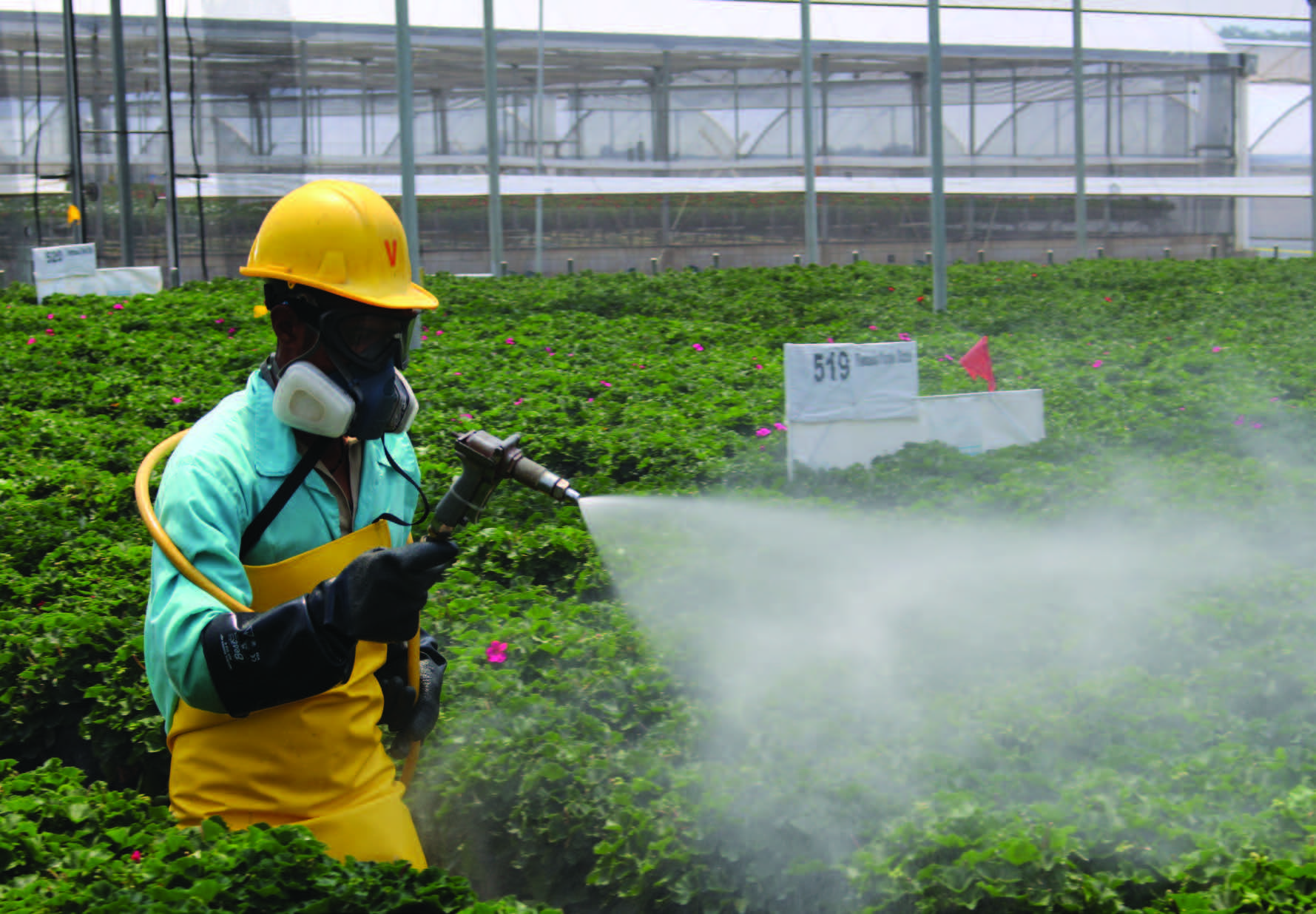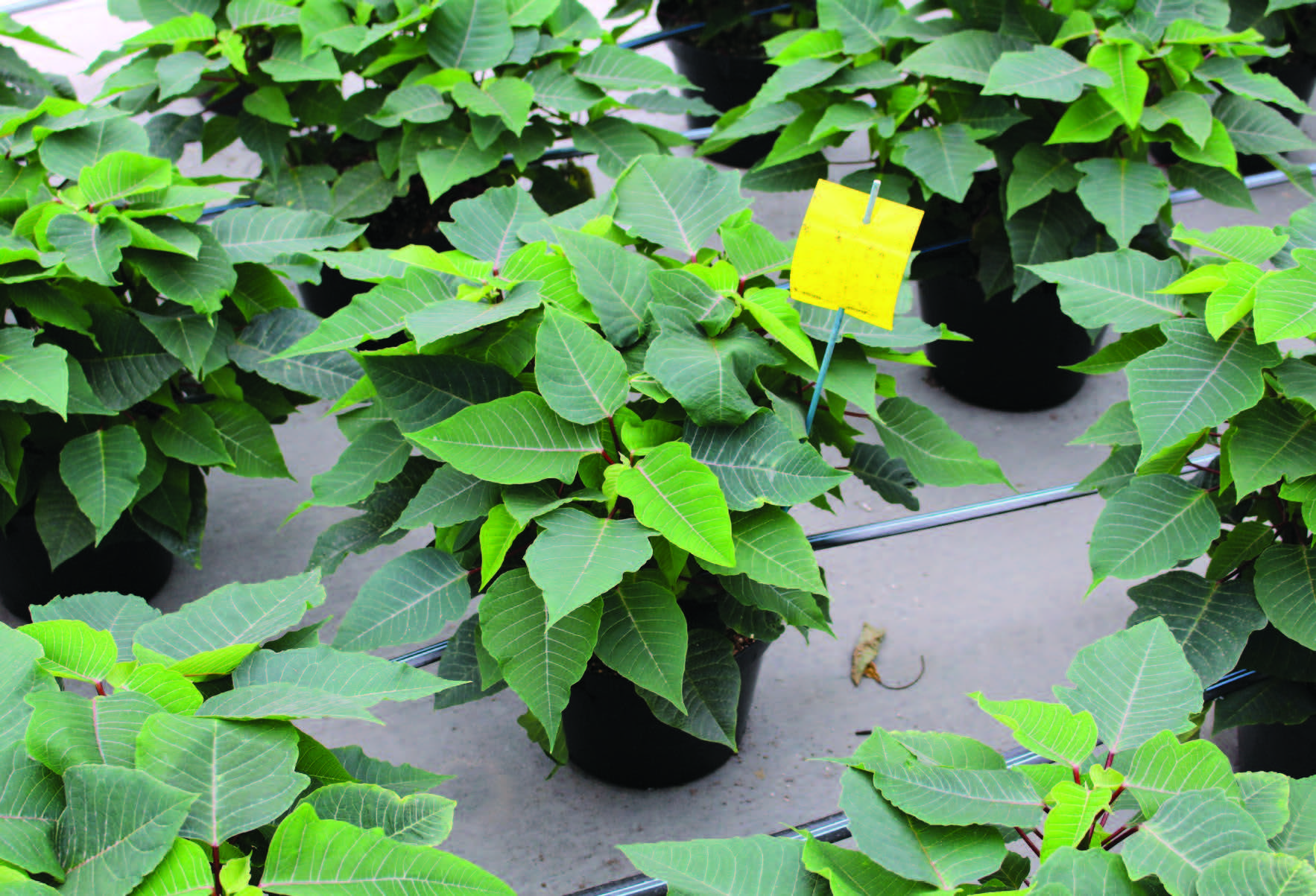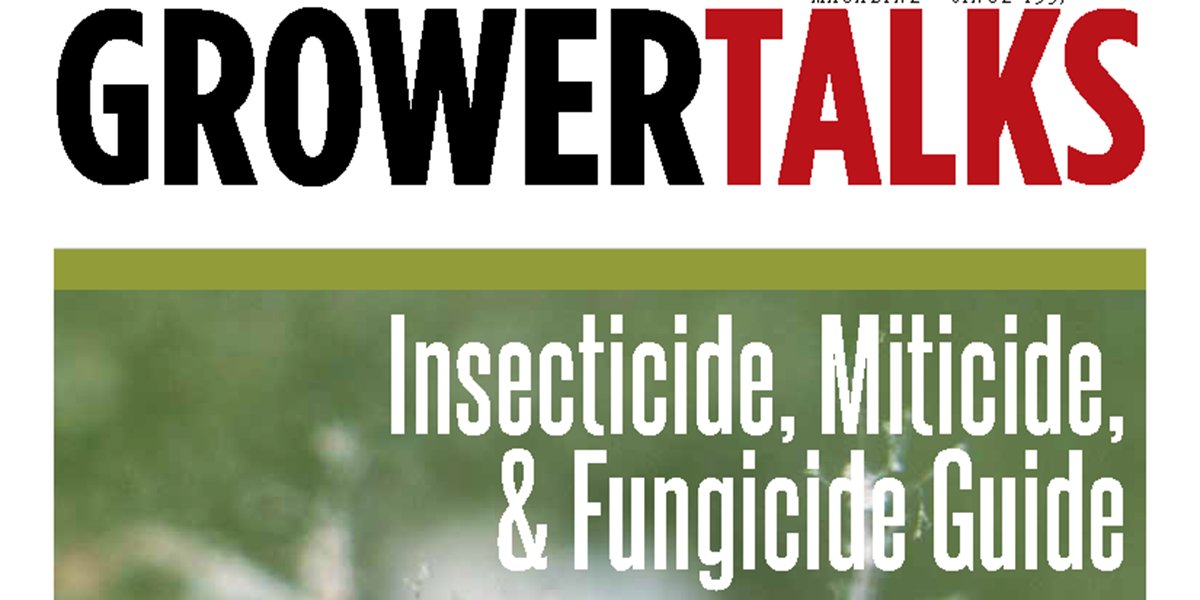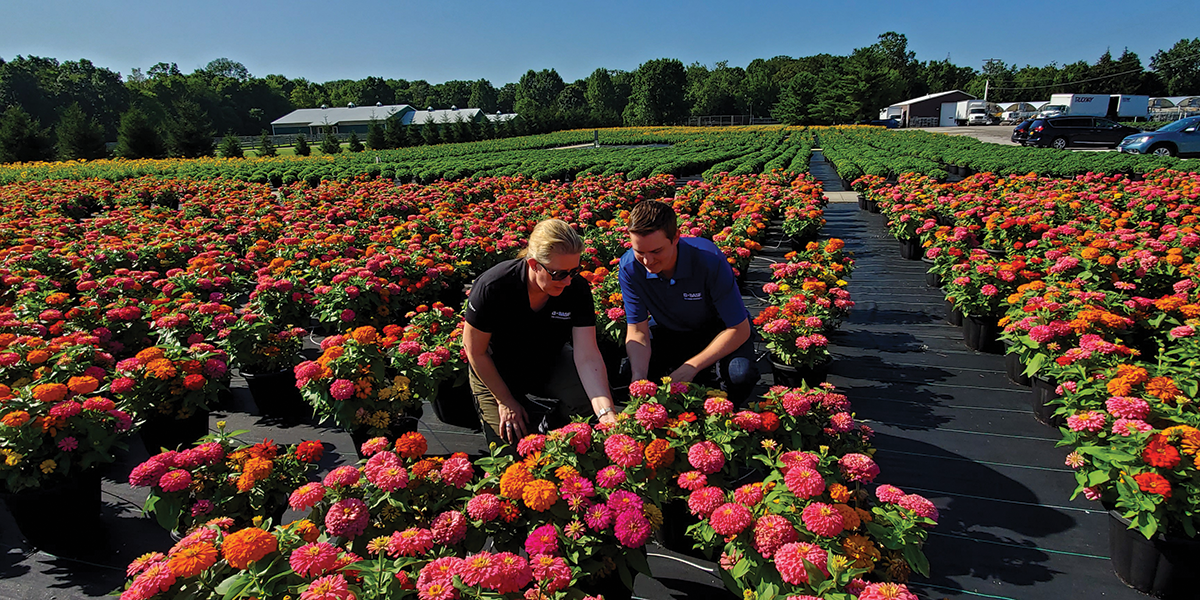Plant Protection: How to Use Pesticides Appropriately
Written by Dr. Raymond, A. Cloyd, Professor and Extension Specialist in Entomology/Plant Protection for Kansas State University.
Plant protection (formerly integrated pest management or IPM) is designed to alleviate or manage insect and mite pest populations of greenhouse and nursery-grown horticultural crops by using a variety of strategies, including scouting, cultural, physical, pesticidal and biological.
The primary means of managing insect and mite pest populations is still the use of pesticides, in this case, insecticides and miticides. Pesticide applications are conducted to suppress existing insect and mite pest populations in order to prevent or reduce plant damage. Therefore, it’s important to exercise proper stewardship when using pesticides.
This article provides information on the factors that must be considered when selecting and applying insecticides and miticides to manage pest populations.
1. Correctly identify insect and mite pests. Proper identification of insect and mite pests is essential in selecting the appropriate pesticide because many selective pesticides have a narrow range of activity on specific insect and mite pests. There are a number of commercially available pesticides that are only labeled for use on one pest group (e.g. mites), whereas other pesticides have activity on two different insect types (e.g. aphids and thrips) or insects and mites (e.g., thrips and mites). Always have several reference publications available that contain clear images or pictures of the actual insect and mite pest, and plant damage that will help you to correctly identify the pest problem.
2. Thoroughly cover all plant parts with spray solutions. When using contact pesticides, it’s important to thoroughly cover all plant parts, including leaves, flowers, stems, and fruits (Figure 1). The life stages (egg, larva, nymph, pupa or adult) of almost all insect and mite pests are located on the leaf underside to avoid desiccation (loss of moisture) fromultra-violet light. Therefore, coverage of leaf undersides is important in contacting and killing insect and mite pests.
When plants are small, it’s easier to cover all plant parts, resulting in higher mortality of insect and mite pests. However, when the plant architecture (number of leaves and branches) is more complex (Figure 2) insects such as thrips and mealybugs can escape exposure from insecticide sprays because there are more hiding places. In addition, it’s more difficult to cover the surface area of the entire plant. Therefore, more time must be spent spraying each plant to ensure thorough coverage. The use of a surfactant may be required to enhance coverage. A surfactant reduces the surface tension of spray droplets, allowing for better coverage of the leaf surface.
3. Time pesticide applications accordingly. Insecticides and miticides (pesticides) should be applied when the most susceptible life stage of a given insect or mite pest is present. The most susceptible life stages to many pesticides, in general, are the larva, nymph and adult. The egg and pupa are less susceptible to pesticides. Also, pesticide applications should be conducted in the early morning or late afternoon when most insect and mite pests are active.
Moreover, information obtained from scouting will help time applications because scouting determines population dynamics (the change of insect and mite pest populations over time based on environmental factors) and when the most susceptible life stages are present. This information will ensure high mortality levels of insect and mite pest populations following applications, which will help prevent outbreaks from occurring.
4. Monitor water quality. Water quality is very important in enhancing plant growth and development, however, water quality—especially pH and hardness—may also influence the effectiveness of insecticides and miticides.
For example, when the pH of a spray solution is >7.0, certain insecticides (and miticides) are susceptible to alkaline hydrolysis. Alkaline hydrolysis is a degradation process in which insecticide molecules are fragmented when the water pH is >7.0. Insecticides in the chemical class organophosphate (e.g., acephate and chlorpyrifos) are very sensitive to alkaline hydrolysis. A spray solution water pH between 5.8 and 7.0 should be maintained to avoid alkaline hydrolysis. Always read the product label for information associated with appropriate spray solution pH.
5. Rotate pesticides with different modes of action. Rotating pesticides with different modes of action will reduce the potential for resistance developing in insect or mite pest populations. Mode of action refers to how a pesticide negatively affects the metabolic or physiological processes of insect and mite pests. In general, use the same mode of action within a pest generation and then switch to another pesticide with a different mode of action in the next generation.
The rotation of pesticides can vary depending on the season with more frequent rotations occurring from mid-spring through late fall (in most locations) compared to winter through early-spring. This is due to the effects of temperature on insect and mite pests, and the presence of host plants. The pesticide label should contain the Insecticide Resistance Action Committee (IRAC) mode of action designation (number or combination of number and letter) associated with the active ingredient. For example, the IRAC designation for spinosad (Conserve) is 5 and 7C for pyriproxyfen (Distance/Fulcrum). For more information on the IRAC mode of action designations consult the following website: www.irac-online.org
6. Apply pesticides frequently enough. Most commercially available pesticides used in greenhouse production systems only kill the young (larva and nymph) and adult life stage of insect and mite pests with minimal direct effects on the egg and pupal life stages. Therefore, repeat or multiple pesticide applications are required to kill life stages that were initially not affected by previous pesticide applications such as larva and nymph that were in the egg stage, and adults that were in the pupal stage. Furthermore, more frequent applications are needed when simultaneously dealing with multiple age structures or over-lapping generations.
Application frequency depends on the residual activity (persistence) of a given pesticide and temperature, as insect and mite pest development (life cycle: egg to adult) increases under higher temperatures, consequently requiring more frequent applications. However, more frequent applications can result in placing undue selection pressure on insect and/or mite pest populations, thus increasing the potential for insect and mite pest populations to develop pesticide resistance.
7. Use the proper label rate. Always read the pesticide label and follow specific rates accordingly to enhance pesticide effectiveness. In general, avoid consistently exposing pest populations to the highest label rate to mitigate the potential for insect and/or mite pest populations from developing pesticide resistance. The lowest label rate—especially early on in the crop production cycle—may be just as effective as the highest label rate. This may be due to insect or mite pests present early during crop production not being exposed to extensive use of pesticides, which may result in higher initial mortality levels.
In conclusion, pesticide applications will be more effective in suppressing insect and mite pest populations by following the seven points discussed in this article, including: 1) correctly identifying insect and mite pests; 2) thoroughly cover all plant parts with spray solutions; 3) time pesticide applications accordingly; 4) monitor water quality; 5) rotate pesticides with different modes of action; 6) apply pesticides frequently enough; and 7) use the proper label rate.
Related





